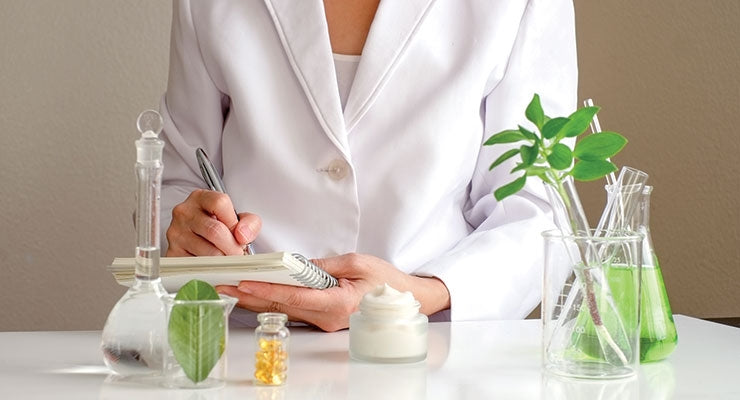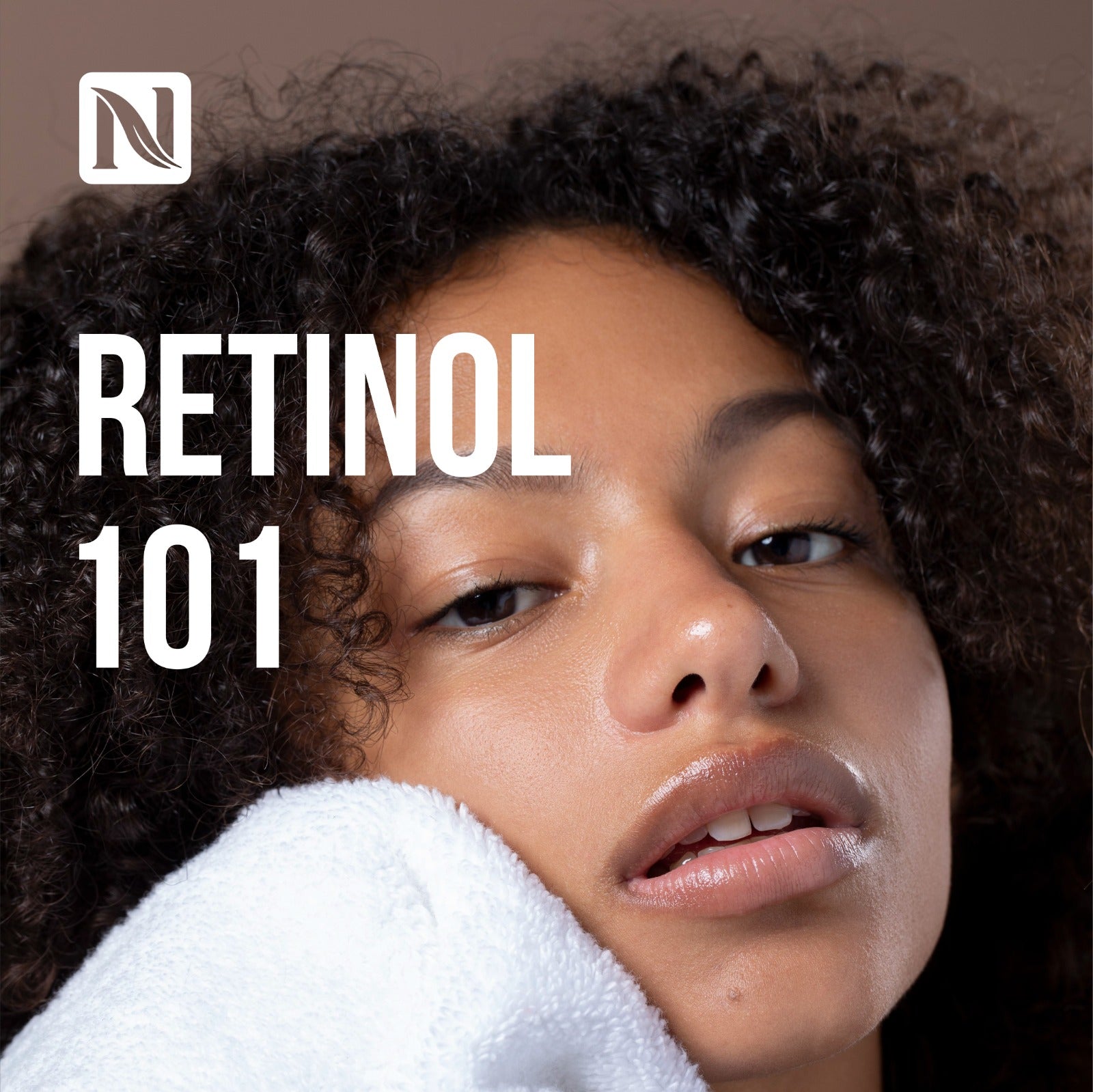
How does a skincare ingredient like coconut oil or shea butter make you feel?
Safe, right? Like for some reasons you can’t explain you just feel they’re going to be mild and pamper your skin nicely.
Okay how about a skincare ingredient that has the word “acid” on them?
If you’re anything like most people just getting to know about skincare you cringe and raise an eyebrow at the mention of using acids on your skin.
Acids in skincare is the science of beauty – From Hyaluronic acid, Azelaic acid to ascorbic acid, all facial acids have their own benefits and there is an acid suited for your unique skin concern and skin type whether oily or dry or acne prone or sensitive.
As you would soon get to discover in a moment, Skincare acids are derived from familiar natural sources and as such are as beneficial and healthy as your shea butters and coconut oils.
They’re the miracle tools used to fight acne, wrinkles, age spots, acne scars and uneven skin tone.
With that out of the way, Ladies and gentlemen fasten your seat belts as we about to take off to explore the world of exfoliating acids, what they are, the different types and how you can use them to get the skin of your dreams.
What Are Exfoliating Acids?

If you’ve ever taken a chemistry class in secondary school, you’re probably familiar with the pH scale. (Hold on don’t zoom off the page yet, we promise we’re getting to acids for skin care 😊) While a seven is perfectly neutral (example water), any substance that falls below 7 is considered acidic — and above it, basic. So by the scientific definition, tons of skincare ingredients you don’t think of as acids — like, for example, vitamin C — could be categorized as such.
TWO PRIMARY TYPES OF EXFOLIATING ACIDS – AHAs & BHAs Explained:
But it’s alpha and beta hydroxyl acids (you may know them as AHAs and BHAs) that provide the exfoliating benefits typically associated with acids.
These chemical exfoliants work in two ways: by penetrating into the pores to shift build-up and help clear breakouts (in the case of beta hydroxy acids – BHAs or by lifting off the build-up of dead cells on the skin's surface to reveal a brighter, smoother complexion (in the case of alpha hydroxy acids - AHAs).
Depending on the strength of the acid, this shedding can actually be visible to the naked eye. Ever notice flakes falling from your skin after getting a chemical peel at the spa? Yep, those are all dead cells. An AHA exfoliating serum could achieve that for you at home.
What is a BHA exfoliant?
BHA stands for beta hydroxy acid.
The only used BHA in skincare is salicylic acid, so when you hear a product contain a BHA, just know it contains salicylic acid as part of it’s active ingredients, which can be derived from natural sources such as willow bark extract.
BHAs are oil soluble, which means “they have the ability to penetrate deeper into pores, really helping to unclog pores and dissolve excess sebum build-up, so if you have an oilier, blemish-prone skin, salicylic acid is a great ingredient for treating and preventing acne – not surprising it has over 673,000 monthly searches on Google.
What is an AHA exfoliant?
AHA stands for alpha hydroxy acid. “AHAs are a series of acids, mostly derived from plant and animal sources, although some are synthetically produced. Popular AHAs such as glycolic, mandelic and citric acid can be found in a variety of skincare products such as toners, exfoliators and serums you might have seen on instagram or beauty shop or even jumia.”
Pay attention now, here comes the tricky important part.
Unlike BHA, AHAs are water soluble, meaning they can’t penetrate through the skin’s natural oils. For this reason, they’re mostly used for their exfoliating properties on the skin's surface. “They are great for helping to even out skin tone, lift pigmentation, treat fine lines and fade scarring. Some AHAs, such as lactic acid, also act as a humectant, which means they will attract hydration to your dry skin.
TYPES OF ALPHA HYDROXYL ACIDS & THEIR BENEFITS TO SKIN
1. Glycolic acid
Glycolic acid is derived from sugar and one of the most common acids used in skincare. It has the smallest molecule of all the acids, so it penetrates the deepest than other AHAs, making it one of the most effective acids available. since it penetrates so deeply and results in a more intense exfoliation, it also has a higher chance of producing irritation.
Glycolic Acid Benefits:
- Great for all skin types (especially aging/dull/textured skin)
- smoothes out fine lines and wrinkles
- stimulates the skin’s texture and tone
- stimulates collagen production and cell turnover
- helps improve the appearance of photoaged skin
- works by dissolving the glue that holds together dead skin cells
- helps reduce the appearance of dark spots and pigmentation
2. Lactic acid
Lactic acid is the second smallest molecule out of all the acids. It’s gentler than glycolic and draws moisture to the skin, making it a hydrating agent, too. Created from sugar or fermented milk, this alpha hydroxy acid is gentle enough for people with sensitive skin.
Lactic Acid Benefits:
- Great for all skin types (especially dry/sensitive skin)
- smoothes out fine lines and wrinkles
- stimulates collagen production and cell turnover
- strengthens skin’s barrier by encouraging it to make more ceramides
- provides hydration to the skin
- helps brighten dull skin and reduces discoloration
- fades acne marks
3. Citric acid
Even gentler yet are fruit acids such as citric (which is typically derived from lemon or grapefruit) These larger compounds work on the uppermost layer of the skin, and are often combined with glycolic or lactic acids to help boost their effectiveness.
Citric Acid Benefits:
- Great for all skin types (sensitive skin use with caution)
- smoothes out fine lines and wrinkles
- Unclogs pores and minimizes breakouts
- helps improve the appearance of photoaged skin
- used for astringent properties and for exfoliating purposes
- it’s a chelator which means it eliminates irritating impurities
- improves the appearance of pigmentation and dark spots
- great for dull skin that lacks lustre
4. Mandelic Acid
Mandelic acid is derived from bitter almonds. It's an AHA that's been mostly studied for use with acne.
Mandelic Acid Benefits:
- Great for all skin types (especially dry/acne prone skin)
- helps regulate sebum production
- contains anti bacterial properties
- contains powerful anti inflammatory properties
- stimulate collagen production and cell turnover
- ideal for sensitive skin types as it exfoliates gently
- increases hydration and firmness in the skin
- smoothes fine lines wrinkles and texture
5. Malic acid
malic (which usually comes from apples). are often combined with glycolic or lactic acids to help boost their effectiveness.
Malic Acid Benefits:
- Great for all skin types (especially aging/pigmented/dull skin)
- smoothes fine lines and wrinkles
- Exfoliates the skin gently
- Stimulates collagen production and cell turnover
- Fades appearance of hyperpigmentation and age spots
- acts as a protective barrier against foreign organisms
- as a humectants, it increases hydration.
- restores the skin’s PH balance
6. Tartaric acid
Tartaric acid is a white crystalline diprotic organic acid. The compound occurs naturally in many plants, particularly in grapes, bananas, and tamarinds. It is also one of the main acids found in wine
Tartaric Acid Benefits:
- Great for skin types (especially aging/sensitive)
- smoothes texture and evens skin tone
- gently sloughs off dead cells
- strong antioxidant and anti inflammatory properties
- contains keratolytic and astringent agents
- helps regulates and balance the PH of products
- added to glycolic or lactic acid to increase strength
Exfoliating acids: how to get started
When using any type of exfoliating acid product, golden rule is “slow and steady wins the race. If you have reactive skin, or are sensitive, patch test a product first, using it on the wrist or behind your ear, and seeing how your skin feels and looks after 24 hours.
Once you’re ready to start using an acid product, don’t go all guns blazing, leaving a product on for too long or using it more frequently than advised this will only break down your skin barrier that’s why it’s crucial to first read the instructions.
If everything feels okay, then slowly incorporate a product into your skincare regime, using two-to-three times a week and then build up to every day if the product is designed to be used as frequently as that.
Start off with acids that tend to have a slightly bigger molecule to them, as they will penetrate slower, and be less irritating. Lactic acid is a great starting point. Glycolic acid has quite a small molecule size, so it will penetrate into the skin quickly, which is why it can often feel quite tingly and active on the skin but when combined in formulas with Aloe vera and chamomile they help soothe skin and calm irritations.
“Of course, if you feel any product is really not suiting your skin, stop using it immediately. And crucially, always wear SPF. Using any skincare with AHA/BHAs in is going to be exfoliating your skin in some way, so it's important to protect the skin adequately so it doesn’t get burnt or become more prone to pigmentation.
How to use acids correctly
First off you don’t want to use too many exfoliating acid based products so you don’t weaken your skin barrier. “The skin barrier is the protective layer of your skin, which is there primarily to keep moisture and hydration inside, and block external aggressors such as pollution from getting into your skin.
AHAs and BHAs should be used in different ways. When it comes to AHAs, it's crucial not to use too much, too soon. "Do not overuse an alpha-hydroxy-acid product, “Once every other day is plenty, unless you are on a programme with an expert that says otherwise.” However, it is often safe to use BHA (Salicylic acid) daily.
Remember, too, to be mindful of the other active ingredients (such as retinols and antioxidants) in your skincare line-up. “Too many highly active ingredients can also result in an imbalance within the skin, causing irritation and breakouts,”
Not all ingredients play along well when used together.
As a rule of thumb, on the days you choose to include AHAs in your routine, avoid products containing vitamin C and retinol immediately after, allowing your skin to work with a single active ingredient at a time, therefore reducing the risk of overstimulation causing adverse reactions.



Comment
I will like to follow step by step to bring a good sick
Skinny.